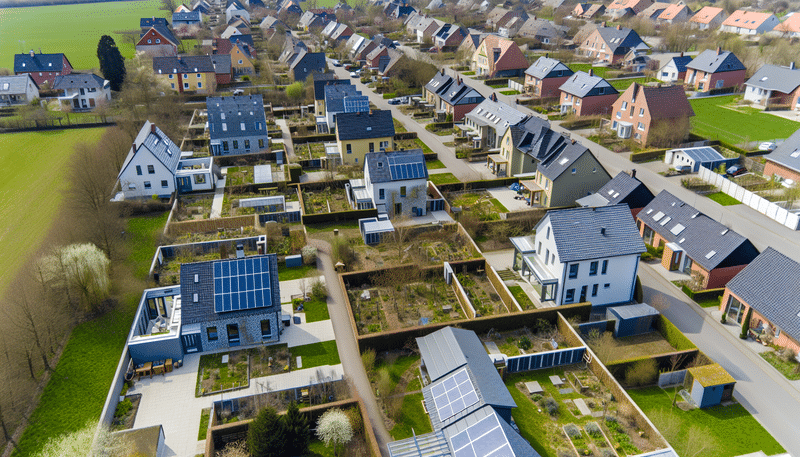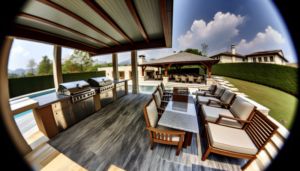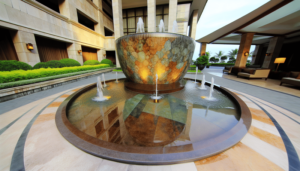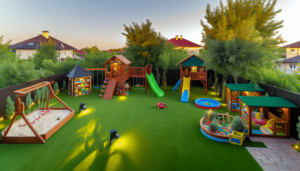Accessory Dwelling Units (ADUs) have gained popularity as a solution to housing shortages and affordability issues. However, properly setting up utilities and infrastructure is crucial for the successful development of an ADU. In this article, we’ll explore the essential utility connections and infrastructure requirements for ADUs, including local codes and regulations that impact the process.
Understanding the Basics of ADU Utility Connections
Utility connections for ADUs refer to the essential services required for the unit to function, such as electricity, water, sewer, and gas. These connections typically need to be separate from the primary dwelling, which can add complexity and cost to the ADU development process. It’s important to understand how utility connections for ADUs differ from those of the main house to ensure proper planning and budgeting.
Essential Utility Services for Every ADU
When planning an ADU, consider the following essential utility services:
- Electrical connection
- Plumbing and sewer systems
- Water supply
- Heating and cooling (HVAC)
- Natural gas (if applicable)
- Telecommunications (internet, phone, cable)
Each of these utilities plays a vital role in making an ADU livable and functional.
Electrical Connection: Powering Your ADU
An electrical connection is a non-negotiable utility for any ADU. The process involves running a separate electrical line from the main panel to a subpanel in the ADU. The subpanel will distribute power throughout the unit. It’s crucial to work with a licensed electrician to ensure the connection is up to code and can handle the anticipated electrical load of the ADU.
Plumbing and Sewer Systems for ADUs
Proper plumbing and sewer connections are essential for the bathroom, kitchen, and laundry facilities in an ADU. In most cases, the ADU will need to connect to the main house’s sewer line, which may require trenching and pipe installation. The complexity and cost of this process can vary depending on factors such as distance from the main house and local regulations. For example, in San Francisco, recent ADU regulation updates have streamlined the permitting process for sewer connections.
Designing Efficient Utility Infrastructure for Your Accessory Dwelling Unit
Thoughtful planning of utility connections can lead to a more efficient and cost-effective ADU. Consider the following tips when designing your ADU’s utility infrastructure:
- Incorporate energy-saving utilities and appliances
- Explore green building designs and sustainable materials
- Utilize smart home technologies for optimal energy usage
- Plan for future upgrades and expansions
By designing with efficiency in mind, you can create an ADU that is both functional and environmentally friendly.
The Cost of Setting Up ADU Utilities
The cost of connecting utilities to an ADU can vary greatly depending on factors such as location, unit size, and the condition of existing infrastructure. On average, homeowners can expect to spend anywhere from $5,000 to $30,000 on utility connections for their ADU. However, some municipalities offer financial assistance programs to help offset these costs. For instance, LA County has introduced ADU financing programs to support homeowners in the development process.
| Utility Connection | Average Cost Range |
|---|---|
| Electrical | $1,000 – $5,000 |
| Plumbing and Sewer | $2,000 – $10,000 |
| Water Supply | $1,500 – $5,000 |
| Natural Gas | $500 – $2,000 |
| Telecommunications | $500 – $2,000 |
Navigating Permits and Compliance for ADU Utility Connections
Before starting any utility connection work, it’s essential to obtain the necessary permits and ensure compliance with local building codes. This process typically involves submitting plans to your local building department for review and approval. Failing to secure the proper permits can result in costly fines and delays.
When navigating the permitting process, consider the following:
- Research local zoning laws and building codes related to ADUs
- Consult with your local building department for guidance
- Hire experienced professionals familiar with ADU regulations
- Allow ample time for the permitting process
Overcoming Challenges in ADU Utility Setup
Developing an ADU comes with its fair share of challenges, particularly when it comes to utility connections. Some common challenges include:
- Upgrading existing infrastructure to accommodate the ADU
- Navigating complex permitting processes
- Coordinating with multiple utility providers
- Dealing with unexpected costs and delays
To overcome these challenges, it’s crucial to work with experienced professionals who specialize in ADU development. For example, Seattle-based ADU utility specialists have the expertise to anticipate potential issues and provide solutions to keep your project on track.
Case Study: Utility Connections in Urban ADUs
To better understand the process of setting up utility connections for an ADU, let’s take a look at a case study from New York City. In this example, a homeowner successfully navigated the complexities of adding an ADU to their property in a dense urban area.
The homeowner worked closely with a local architect and contractor to design an efficient and code-compliant ADU. They also engaged with the local building department early in the process to ensure a smooth permitting experience. By carefully planning the utility connections and infrastructure, the homeowner was able to minimize costs and avoid unexpected delays.
This case study demonstrates the importance of thorough planning, collaboration with experienced professionals, and proactive communication with local authorities when developing an ADU in an urban setting.
The Future of ADU Utility Connections
As the demand for ADUs continues to grow, we can expect to see new trends and innovations in utility connections and infrastructure. Some emerging trends include:
- Increased adoption of renewable energy sources, such as solar panels
- The integration of smart home technologies for energy efficiency
- Streamlined permitting processes for ADU development
- Greater flexibility in local zoning laws and building codes
In a post-COVID world, the role of ADUs in providing affordable housing solutions has become even more significant. As a result, municipalities may need to adapt their regulations and infrastructure to support the growing demand for these units.
By staying informed about the latest trends and regulations surrounding ADU utility connections and infrastructure, homeowners and developers can create functional, sustainable, and code-compliant accessory dwelling units that contribute to the overall housing landscape.







